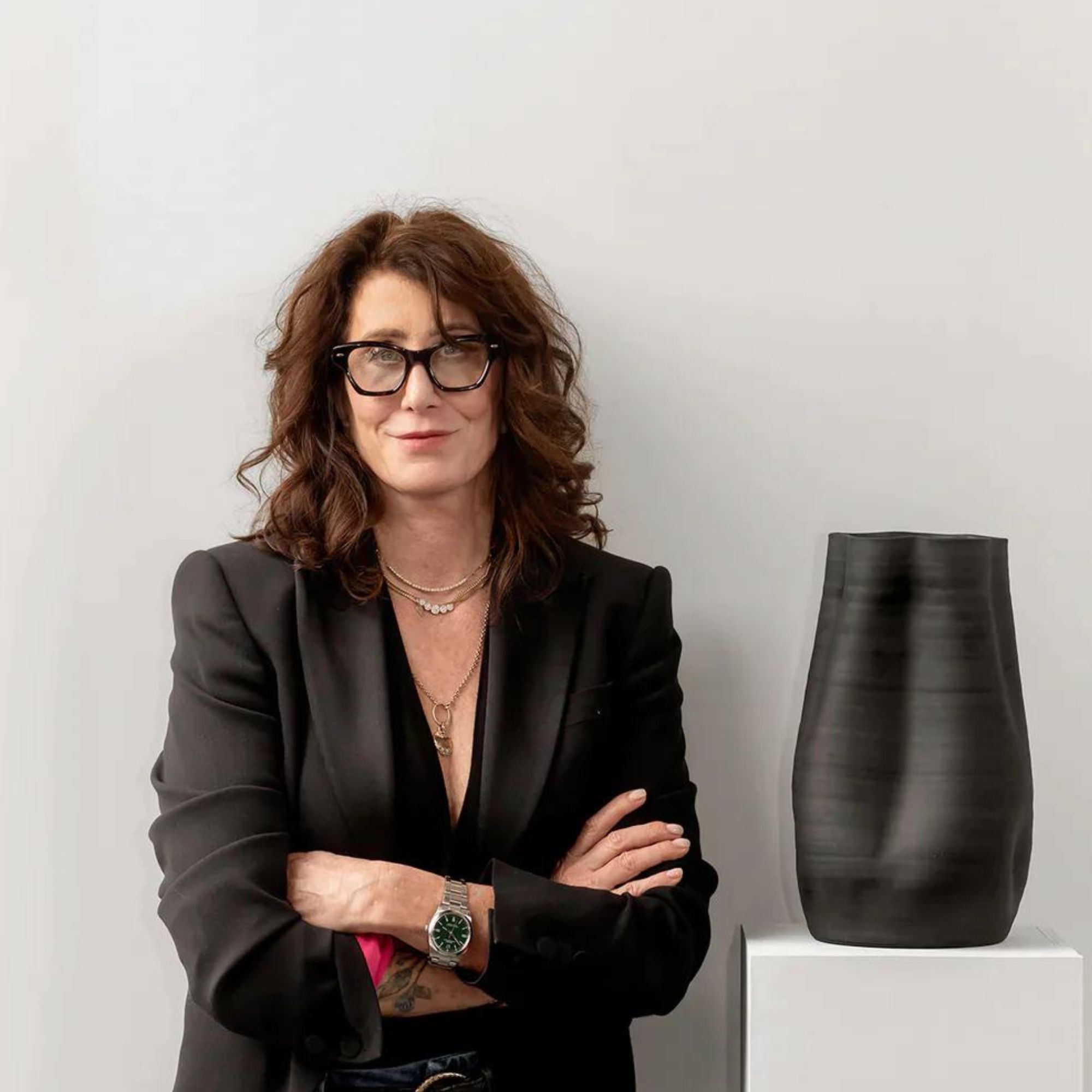What are the rules for Japandi design? 7 key elements to this timeless style
Experts share how they style sleek, sophisticated Japandi-style spaces


Japandi interior design is steadily catching on, inspiring designers and homeowners alike to channel its minimalistic, nature-inspired aesthetic. A unique blend of Japanese and Scandinavian influences, the design style is timeless, versatile, and hard to get wrong.
Despite its approachable nature, there are some design guidelines to keep in mind when going for the comfort-forward style. We spoke with interior designers who love the look, and compiled a list of their top seven rules for channeling Japandi design. Here's how to bring the decor style home.
What is Japandi style?
'Japandi design is about blending Japanese and Scandinavian styles to create a serene and inviting space,' says Olga Alexeeva, creative director of London-based Black & Milk.
Combining wabi-sabi, the Japanese mindset of embracing imperfection, with hygge, the warm and welcoming Danish concept, Japandi design is a refined and minimalistic take on interiors. Amber Dunford, interior stylist and design psychology coach at Amber Dunford Designs, says that the 'hybrid design style' diverges from design tradition in unorthodox yet beautiful ways.
'Scandinavian and Japanese aesthetics embrace the beauty of imperfections and the use of raw materials, leaving space for rule-breaking and room for the unexpected,' says Amber.

Amber Dunford is an Interior Stylist and Design Psychology Coach at Amber Dunford Designs.
What are the rules for Japandi design?
These are the guidelines designers say you should keep in mind when designing a Japandi-inspired space. By keeping it simple and infusing nature into your space, you'll be well on your way to a classic Japandi interior – here's what to know.
1. Embrace minimalism

'When incorporating Japandi influence into your space, embracing minimalist style is key,' says Kym Gold, founder and president of dumæ.
Design expertise in your inbox – from inspiring decorating ideas and beautiful celebrity homes to practical gardening advice and shopping round-ups.
Instead of solely focusing on how furniture and other belongings fit into your interior design scheme, Kym suggests paying mind to the empty space as well. Japandi relies on a pared-back, sleek aesthetic that doesn't meld with loads of clutter.
'Consider how the design blends with your surroundings, paying attention to the interaction with negative space and the emotions it evokes,' she says.
Amber adds that the 'clean lines and simplicity' associated with Japandi design can be adjusted a bit to your personal design style, too, taking on either 'boxy or circular shapes.' Experiment with simple furniture arrangements and streamlined designs to achieve the sophisticated style.
'Furniture is typically without ornamentation, such as nail heads, tufting or tassels. Embracing negative space in your furniture layouts is a loose rule to consider, leaving room for the eye to breathe,' she says.

Kym Gold is the Founder and President of dumæ, a luxury home goods brand based in Los Angeles.
2. Stick with neutral colors

Along with the minimalistic base called for in Japandi design, decorating with neutrals is paramount to the aesthetic. Stick with nature-based hues and classic warm, earthy shades to create a serene oasis that keeps with Japandi principles.
'A soft, muted color palette is ideal for Japandi. Although it’s typically shown in an earthy natural color palette, it can also work really nicely in darker hues like warm browns, deep charcoal, black or saturated earthy tones of rust or terracotta,' says Amber.
3. Integrate natural materials

With Japandi design, natural and eco-friendly materials fit right in, bringing the fusion look to any room of the house. Lexie Sokolow, designer and brand manager at Studio LIFE/STYLE, says that these planet-friendly materials play into the aesthetic's emphasis on practicality.
'It should feel earthy yet fresh at the same time. An easy way to bring in this earthiness is though primitive and vintage vessels and accessories,' says Lexie.
Blair Moore, creative director and principal of Moore House Design, says that Japandi design 'always revolves around simplicity and natural materials,' principles she upholds in all of her design projects.
In the firm's Minimalist Retreat project, Blair says tadelakt plaster brought an organic, welcoming feel to a bathroom's design – a perfect example of the transformative power of natural finishes.
'Tadelakt is a breathable material that develops a beautiful patina over time. Japan boasts a rich heritage of using slaked lime plaster in traditional building methods, which inspired our choice. Images fail to capture the essence of tadelakt; one must feel it to truly appreciate its magic,' says Blair.

Blair Moore is an award-winning designer, as well as the creative director and principal of Moore House and Moore House Design.
Artem Kropovinsky, interior designer and founder of Arsight, suggests wood, stone and natural fiber to bring an added element of organic texture into a space: 'Texture and warmth from these elements quiet the soul. We feel anchored because this is a respite from daily struggle,' he says.
Ceramic is another subtle, refined way to bring organic materials into an interior, says Kym. She says dumæ's ceramic decorative accessories 'offer versatility and organic, fluid design elements that perfectly complement the Japandi aesthetic.'

Based in New York, Artem Kropovinsky, founder of Arsight, has a decade of extensive and considerable global design experience. Prioritizing minimalism, sustainability, and authenticity, Artem, alongside his team of professionals, works on projects in the US and worldwide.
4. Bring the outdoors in

Finding a seamless blend between the indoors and outdoors is another central tenet of not only Japandi design, but also its two main influences: Japanese and Scandinavian design styles. Kym says that she associates Japandi with the natural environment that surrounds her, a testament to the design style's universality.
'Japandi design inspires an organic, minimal style that resonates with me, evoking the tranquility and fluidity of Malibu's coast, which is my source of inspiration. This aesthetic aligns with my design philosophy, where each piece serves multiple functions, echoing Japandi's blend of zen aesthetics and functionality,' says Kym.
5. Channel coziness

Though Japandi's minimalistic simplicity sets it apart, it also relies on a comfort-forward mindset. 'Strive for a balance between simplicity and coziness,' says Olga.
Among the clean lines and natural materials present in Japandi, intersperse comfortable accents like plush rugs and lush throw blankets, and carve out small spaces for self-care. Fireplaces, nooks and hideaway office spaces mesh beautifully with Japandi style.
6. Keep Scandi style in mind

Scandinavian design principles have proven incredibly popular over the last several years, gaining traction for their warm and inviting influences on interior design. From hygge, which describes a comfortable and contented feeling that's expressed through design, to minimalist organization, Scandinavian principles can be found throughout the Japandi style. When designing a Japandi space, reference these well-loved ideas for an authentic, welcoming look that'll never date.
'Draw inspiration from Scandinavian design with cozy textiles and light woods. Maximize natural light and bring in indoor plants for a fresh atmosphere,' says Olga.
7. Look to Japanese interiors

'Wabi-sabi is a Japanese philosophy that emerged around the 15th century. As an interior design style, it embraces the beauty of imperfections. Around 2017, this aesthetic merged with the popular Scandinavian design style. This may have been a timely merge, as our mental health has become increasingly more important, especially when it comes to our homes and the role they play in fostering our well-being. This style tends to promote those values,' says Amber.
Beyond wabi-sabi, look to Japanese design hallmarks for inspiration that'll elevate the finished Japandi aesthetic. From Japan's iconic kitchen design style to small accessories reminiscent of Japanese design, ensuring an even blend between Scandinavian and Japanese styles will make for a chic, cohesive look.
'Incorporate Japanese elements subtly, such as sliding doors or paper lanterns,' says Olga.
With these simple guidelines, getting the Japandi fusion style down is seamless and accessible. Remember to keep it simple and nature-focused, and you'll be left with a warm, inviting space that'll last the long term.

Abby was the Interior Design News Editor at Homes & Gardens and is now studying for her Master's degree in Journalism at City University, London. Prior to joining our team, she worked with Better Homes & Gardens, where she wrote and edited content about home decor, gardening tips, food news, and more. She studied Journalism and English Literature at New York University and moved to London to pursue her love of writing in 2023.


